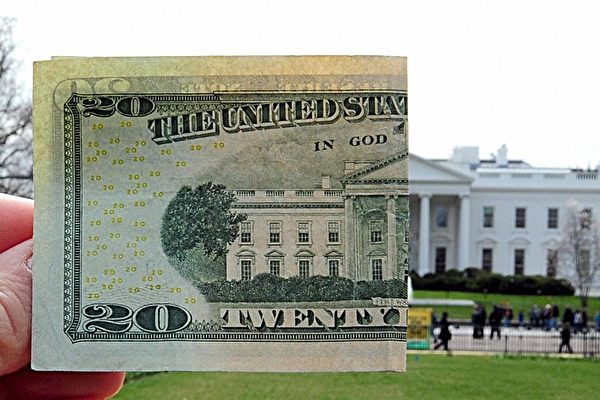As the United States’ national debt surpasses $34 trillion, drawing attention from Congress, polls show that Americans are increasingly concerned about their country’s balance sheet.
Experts caution that the potential consequences of increasing debt could impact all Americans.
On January 2nd, the US Treasury Department announced that the total public debt of the federal government had reached $34 trillion for the first time. Prior to this, the Congressional Budget Office (CBO) had projected in January 2020 that the federal debt wouldn’t exceed $34 trillion until the fiscal year 2029.
However, the COVID-19 pandemic led to a significant economic slowdown in the US, causing the debt to grow faster than anticipated.
Former US Comptroller General David Walker, speaking to “The Hill,” said, “The fact of the matter is, based on our current fiscal trajectory, young people are going to pay more and get less.”
“At the same time, in an increasingly interconnected and interdependent world, they will face more intense competition.”
It is projected that the US national debt will climb to over $54 trillion in the next 10 years, with experts issuing warnings about rising interest rates.
Desmond Lachman, a senior fellow at the conservative think tank American Enterprise Institute, told “The Hill,” “If the government is borrowing, you need to raise a lot of money, so that means having to sell a large number of bonds, which will drive up interest rates.”
“If overall interest rates rise, then mortgage rates will also rise,” he said, noting that the Federal Reserve has raised rates multiple times to combat inflation.
“This is important for young people,” he said, meaning that they “now have to go out and borrow at very high rates” to buy homes and repay loans.
In a February report, the CBO projected that in the next ten years, publicly held debt would significantly increase from 99% of GDP in 2024 to 116% in 2034.
The CBO also estimated that by 2025, the net interest costs on debt “as a share of GDP will be higher than at any time since at least 1940.” 1940 was the first year the Office of Management and Budget (OMB) reported such data.
Experts indicate that the increase in national debt could have implications on the job market.
David Wilcox, a senior researcher at the Peterson Institute for International Economics, stated, “The higher the debt, the higher the interest rates. Higher interest rates tend to inhibit businesses’ investment in new capital, which can increase workers’ productivity.”
“The higher the debt levels, the lower economic productivity,” he said, forming a vicious cycle where “lower economic productivity means less federal funding that can be sustained.”
Industries such as residential construction and building are often more sensitive to interest rates, making employment in these sectors susceptible to the effects of increasing debt.
Joshua Gotbaum, an economic research fellow at the Brookings Institution, told “The Hill,” “As interest rates rise, people’s mortgage costs rise, so home construction typically falls.”
Gotbaum stated that the decisions by the federal government on which expenses to cut and by how much would also impact employment.
“Assuming that the federal government reduces subsidies to farmers to pay off debt, some farmers will reduce cultivation, and some farms will be closed.”
Experts interviewed by “The Hill” also discussed the possibility of further reducing government spending in the coming years as part of congressional efforts to address the national deficit.
Wilcox stated, “I think what Americans can expect to see is that policymakers will likely have to make some painful choices in the next ten or twenty years,” including possible “adjustments” in spending.
To address the national debt issue, lawmakers have proposed several suggestions, including continuing to limit spending beyond the budget caps agreement passed last year.
Federal analysts at the time predicted that measures such as the “Fiscal Responsibility Act” were expected to reduce over $1 trillion in future US deficits over the next ten years.
Conservatives advocate for stricter limits on the 12-yearly government appropriations process by Congress to restrain expenditure.
Both Democrats and Republicans aim to reduce debt, but they remain divided on the methods to achieve debt reduction. Republicans call for significant cuts in non-defense spending items and to abolish clean energy tax credits in the Inflation Reduction Act. The Biden administration continues to push for increased taxes on the wealthy and businesses to reduce the budget deficit.
As Congress works to address the national debt issue, experts suggest that Americans may see changes in tax policies.
Gotbaum mentioned, “If the federal government does not take action and begins to collect enough taxes to pay for the expenses it wants to incur, then the debt will increase.”
“If the debt increases, interest rates go up, and then taxpayers foot the bill,” he said, adding that the cycle of “generational debt” continues because “your parents avoided these bills by Congress not raising taxes to pay for these bills, but by borrowing instead.”
Even though many Democrats advocate for increased taxes on the wealthy and businesses, many Republicans strongly oppose across-the-board tax hikes. Instead, Republicans call for significant spending cuts, focusing on social programs, a move resisted by many Democrats.

